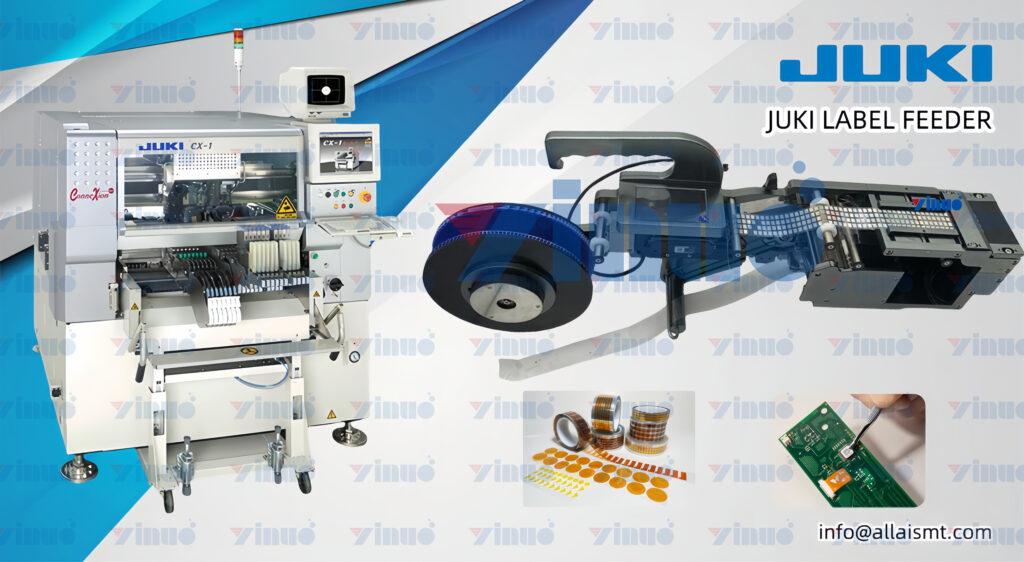How Label Feeders Improve Efficiency in Variable Data Printing
Variable data printing (VDP) is a powerful technique that allows for the customization of printed materials on a large scale. From personalized marketing materials to unique serial numbers, VDP enables businesses to create tailored products that meet specific customer needs. However, the process of applying labels in VDP can be complex and time-consuming, especially when dealing with large volumes of variable data. Label feeders, as automated labeling systems, significantly enhance the efficiency of this process, ensuring accuracy, consistency, and speed.
Understanding Variable Data Printing
Variable data printing involves the on-demand printing of items with changing information, such as barcodes, addresses, or personalized messages. Unlike traditional printing, where each piece of material is identical, VDP allows for variations within the same print run. This capability is invaluable for industries like direct mail marketing, product labeling, and packaging, where customized information is crucial.
However, the challenge lies in ensuring that each label, which may contain different data, is accurately applied to the correct product or material. This is where label feeders come into play.
The Challenges of Manual Label Application in VDP
Manual application of labels in a VDP environment presents several challenges:
- High Risk of Human Error: With the constant variation in data, manually applying the correct label to the correct item can be prone to errors. A misplaced or incorrect label can lead to significant problems, such as product recalls or lost customer trust.
- Inconsistent Application: Manual processes often result in inconsistent label placement, which can affect the appearance and functionality of the final product.
- Slow Process: Manually applying variable labels is time-consuming, especially when dealing with large batches of products, which can slow down production and increase labor costs.
Given these challenges, automating the label application process is crucial for improving efficiency in VDP.
How Label Feeders Enhance Efficiency in Variable Data Printing
1. Automated Precision
Label feeders are equipped with advanced technology that ensures each label is applied with pinpoint precision. In a VDP environment, where each label might contain different data, this precision is essential. The automated system can quickly and accurately place the correct label on each product, reducing the risk of errors that can occur with manual application.
2. High-Speed Application
One of the most significant advantages of label feeders is their ability to operate at high speeds without sacrificing accuracy. This capability is particularly important in VDP, where large volumes of products need to be labeled quickly and efficiently. By automating the process, label feeders can handle high-speed application, significantly increasing production throughput and reducing lead times.
3. Consistency Across Variations
Label feeders ensure consistent application across all products, regardless of the variations in data. This consistency is crucial in maintaining the quality and appearance of the final product. Whether applying barcodes, serial numbers, or personalized information, label feeders guarantee that each label is placed correctly and uniformly.
4. Real-Time Data Integration
Modern label feeders can integrate with VDP systems to receive real-time data, ensuring that the correct label is applied to the corresponding product. This integration allows for seamless communication between the printing and labeling processes, reducing the chances of mismatches or errors. The ability to handle real-time data also means that label feeders can adapt quickly to changes in the printing queue, further enhancing efficiency.
5. Reduced Labor Costs
By automating the labeling process, label feeders reduce the need for manual labor. This reduction in labor not only cuts costs but also minimizes the risk of human error, leading to a more efficient and reliable production process. Employees can then be reallocated to more critical tasks, optimizing the overall workflow.
6. Flexibility and Adaptability
Label feeders are highly adaptable and can handle a wide range of label types, sizes, and materials. This flexibility is particularly beneficial in VDP, where the nature of the data can vary significantly from one product to the next. Whether it’s a simple barcode or a complex, multi-color label, label feeders can apply them with equal efficiency.
The Impact on Production Efficiency
The use of label feeders in VDP environments has a profound impact on overall production efficiency:
- Increased Throughput: By automating the labeling process, production lines can handle larger volumes of products in a shorter amount of time.
- Reduced Errors: The precision and accuracy of label feeders significantly reduce the risk of errors, leading to higher quality output and fewer reworks.
- Cost Savings: The combination of reduced labor, fewer errors, and increased speed leads to significant cost savings, making label feeders a valuable investment for companies engaged in VDP.
Conclusion
Variable data printing offers businesses the ability to create highly customized products that meet specific customer needs. However, the complexity of applying labels in this environment can be a significant challenge. Label feeders provide an efficient, reliable, and cost-effective solution for automating the label application process in VDP, ensuring that each product is labeled accurately and consistently. By integrating label feeders into their production lines, companies can enhance their efficiency, reduce costs, and deliver high-quality products that meet the demands of today’s dynamic market.


